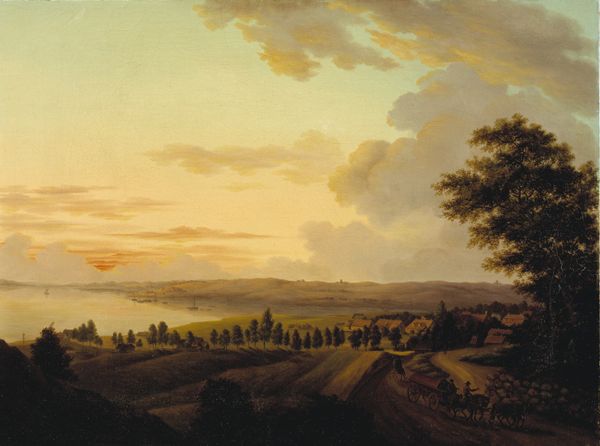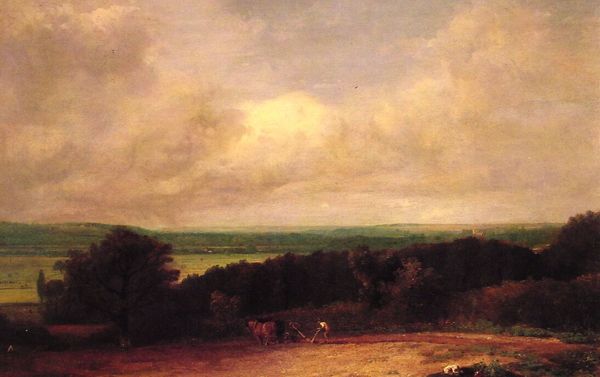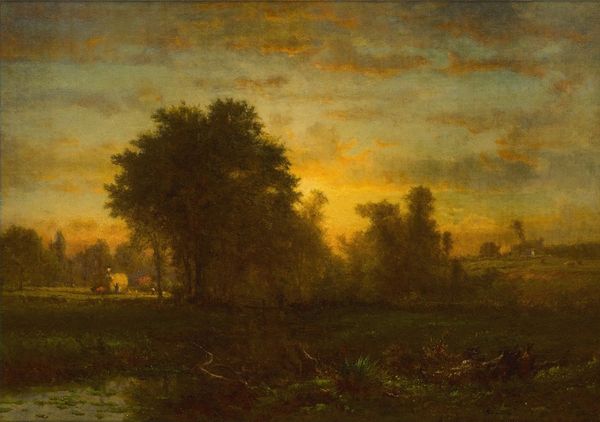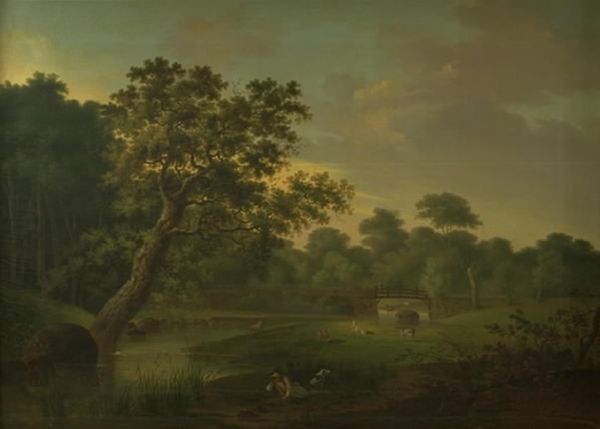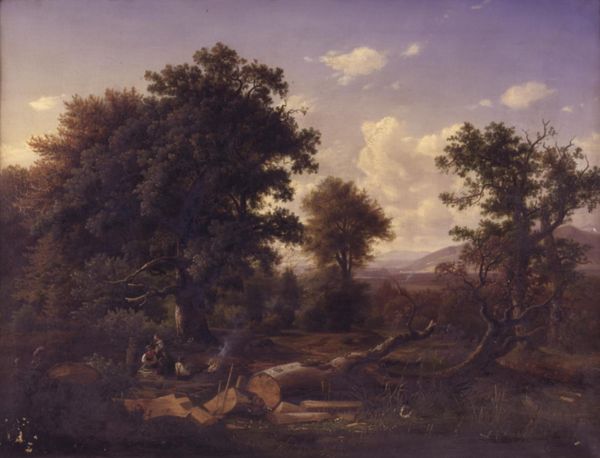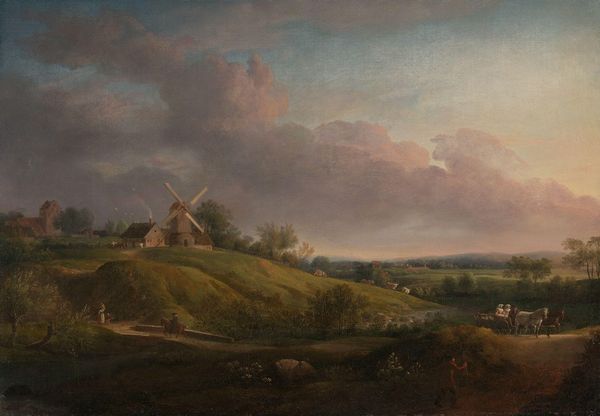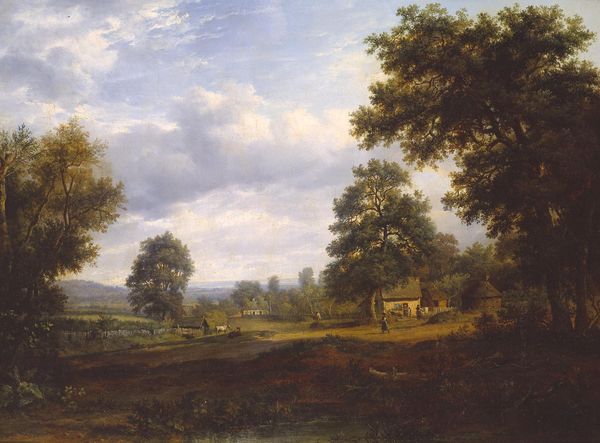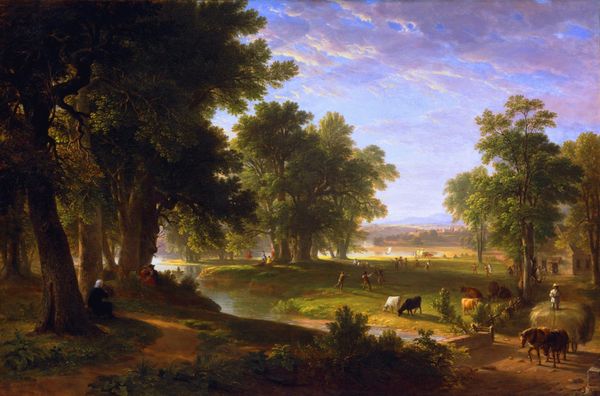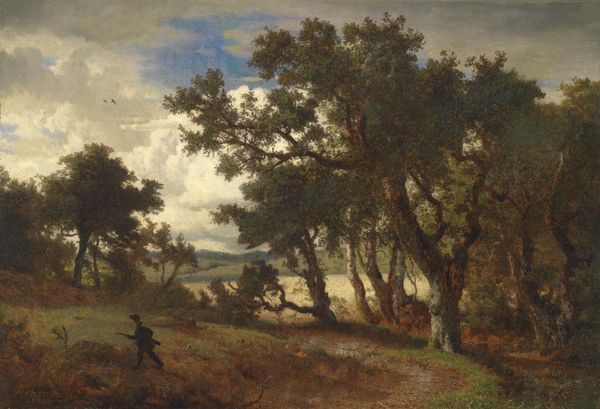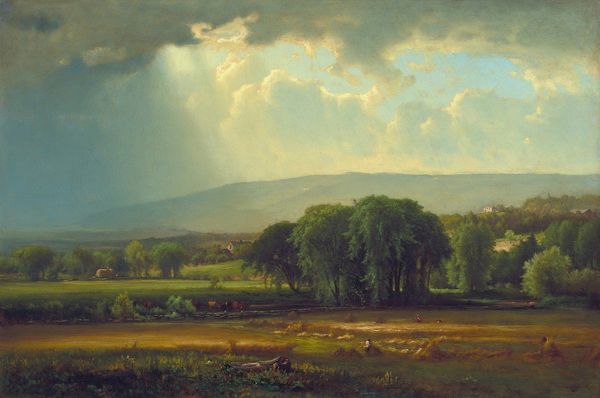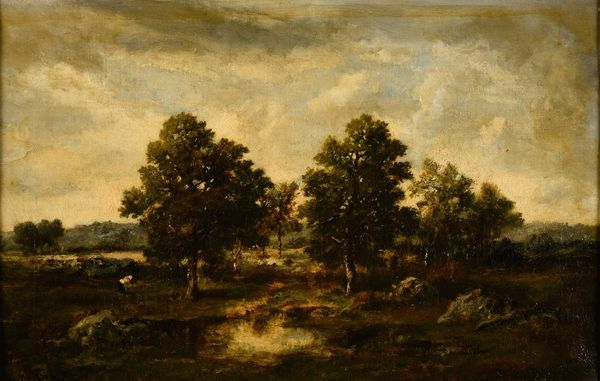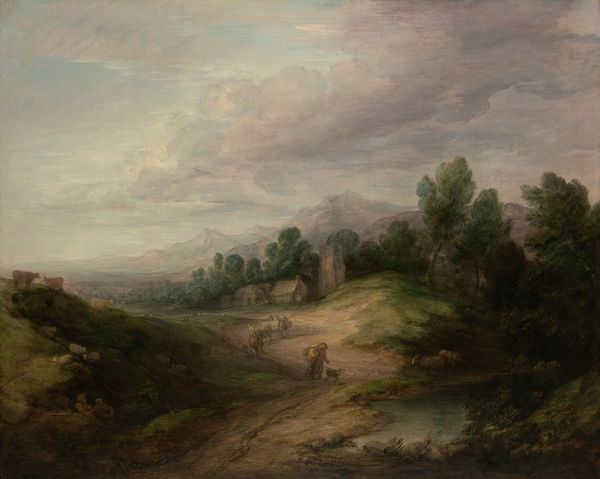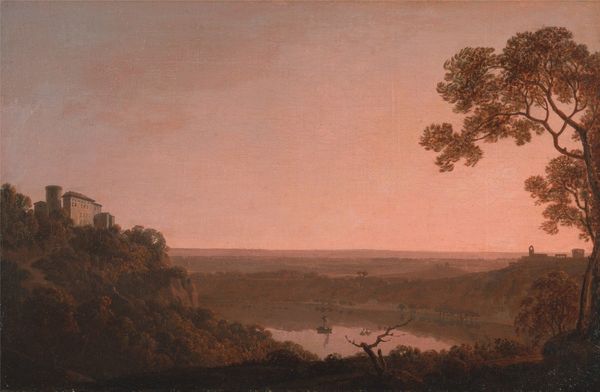
Copyright: Public Domain: Artvee
Curator: Today, we're looking at George Inness's "Peace and Plenty," painted in 1865. Editor: It's… very golden. Almost sepia-toned, as if time itself has aged the viewing experience. The composition feels intentionally harmonious. Curator: Indeed. Inness applied oil paints en plein-air here. Observe how the harvesting process is captured in the rows of wheat sheaves. The very act of gathering resources, the material transformation of field to food, shapes our understanding. Editor: Absolutely. And painted so soon after the Civil War, one cannot ignore the yearning for a specific vision of unified and productive American landscape—an attempt to visually reconcile after immense national trauma rooted in conflict about resources, labor, and rights. Curator: He carefully composed this view—foregrounding labor. Are those farmers, perhaps tending the land, moving towards their home? Note the house nestled in the midground. Inness was quite invested in how rural landscapes literally shaped community and value. Editor: I see that. It's strategically placed to evoke safety and comfort, certainly. There's also this slightly melancholic stillness despite the "plenty". Perhaps reflective of the unresolved tensions, even as the physical labor promises prosperity, there are shadows lurking on the edges of national identity during Reconstruction. Curator: The subdued palette and plein-air application seem designed to evoke a pre-industrial age. Notice the soft, almost blurred edges which were obtained by applying successive layers of glaze. He really sought to find that intersection of idealised landscape and industrial impact. Editor: The artistic license to reimagine the past in such idyllic tones glosses over the historical exploitation inherent in such landscapes during that era—this image promotes comfort through avoidance of reality, maybe even to excuse the problematic system it exists within. Curator: That said, studying the means of production, the material conditions and values he was trying to visualise, provides insights to his worldviews. The act of physically applying paint and glaze is just as valuable. Editor: And seeing through this romantic idealism shows us a need to continually interrogate not just who benefits from "peace and plenty" but also what sacrifices underpin such an image. Curator: Food for thought, indeed. Thanks for joining us today. Editor: It’s been a thought-provoking discussion.
Comments
No comments
Be the first to comment and join the conversation on the ultimate creative platform.
